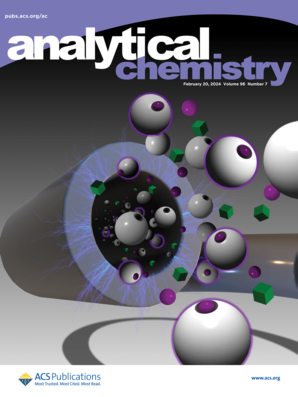T4 DNA Polymerase-Proofread DNA Binding Identifier for Sensitive Homogeneous Immunoassays
IF 6.7
1区 化学
Q1 CHEMISTRY, ANALYTICAL
引用次数: 0
Abstract
Aptamer-based homogeneous immunoassays exhibit considerable potential in the domains of bioanalysis and biodiagnosis owing to their universality in analyzing both proteins and small molecules as well as their compatibility with nucleic acid amplification technologies. Nevertheless, the substantial signal leakage by nonspecific aptamer allostery poses a challenge to enhancing sensitivity further. Herein, we reported a T4 DNA polymerase-proofread DNA binding identifier (ReID). This strategy could harness the dual-enzymatic activity of T4 DNA polymerase to eliminate the leaked signal, thereby efficiently integrating target-induced aptamer allostery with subsequent polymerase chain reaction signal amplification. Moreover, we explored the regulation mechanism of dNTPs concentration on the dual-enzymatic activity of the T4 DNA polymerase. As a result, this strategy achieved an ultrasensitive protein detection limit of 8 fg/mL, validating the effectiveness of this proofreading approach. The universality was further confirmed by highly sensitive detection of small molecules. The exploration of ReID represents a significant advancement in the sensitivity and universality of immunoassays, even demonstrating the potential for multiple proteomic assays, offering a novel perspective for the development of high-performance homogeneous immunoassays.

T4 DNA聚合酶校对DNA结合标识符用于敏感的均质免疫测定
基于适配体的均相免疫测定由于其在分析蛋白质和小分子以及与核酸扩增技术的兼容性方面的通用性,在生物分析和生物诊断领域显示出相当大的潜力。然而,非特异性适配体变构导致的大量信号泄漏给进一步提高灵敏度带来了挑战。在此,我们报道了一个T4 DNA聚合酶校对DNA结合标识符(ReID)。该策略可以利用T4 DNA聚合酶的双酶活性来消除泄漏的信号,从而有效地将靶诱导的适体变构与随后的聚合酶链反应信号扩增相结合。此外,我们还探讨了dNTPs浓度对T4 DNA聚合酶双酶活性的调控机制。结果,该策略达到了8 fg/mL的超灵敏蛋白检测限,验证了该校对方法的有效性。小分子的高灵敏度检测进一步证实了其普遍性。ReID的探索代表了免疫测定的敏感性和普遍性的重大进步,甚至展示了多种蛋白质组学测定的潜力,为高性能均质免疫测定的发展提供了新的视角。
本文章由计算机程序翻译,如有差异,请以英文原文为准。
求助全文
约1分钟内获得全文
求助全文
来源期刊

Analytical Chemistry
化学-分析化学
CiteScore
12.10
自引率
12.20%
发文量
1949
审稿时长
1.4 months
期刊介绍:
Analytical Chemistry, a peer-reviewed research journal, focuses on disseminating new and original knowledge across all branches of analytical chemistry. Fundamental articles may explore general principles of chemical measurement science and need not directly address existing or potential analytical methodology. They can be entirely theoretical or report experimental results. Contributions may cover various phases of analytical operations, including sampling, bioanalysis, electrochemistry, mass spectrometry, microscale and nanoscale systems, environmental analysis, separations, spectroscopy, chemical reactions and selectivity, instrumentation, imaging, surface analysis, and data processing. Papers discussing known analytical methods should present a significant, original application of the method, a notable improvement, or results on an important analyte.
 求助内容:
求助内容: 应助结果提醒方式:
应助结果提醒方式:


